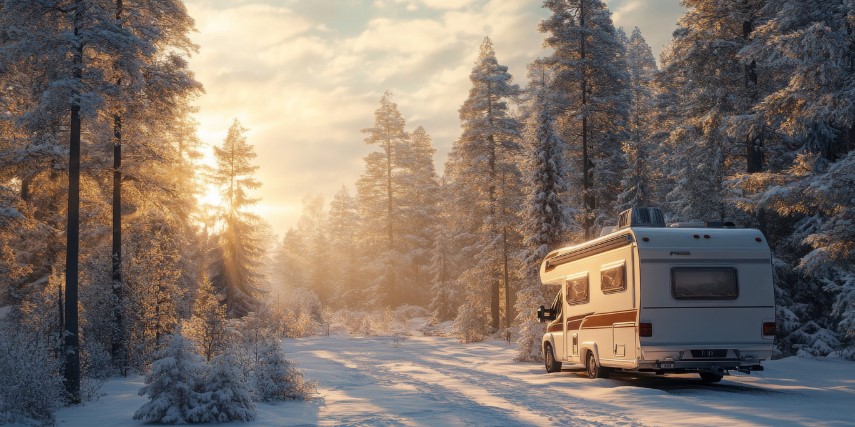


For many areas of the country, late fall is when temperatures regularly start to drop and lows below freezing are quickly approaching, making it essential to perform RV maintenance tasks that protect your pipes from freezing.
Pipes are vulnerable because the water in them expands when frozen, usually causing failure at the weak points, including joints, fittings and valves. Areas of greatest risk include the pipes under your RV, where they are completely open to the cold air. Freshwater storage tanks are also prone to freezing. Pump housing is an area that can be damaged when exposed, and if you haven’t drained your gray and black water lines following a summer of use, these can also be at risk.
Insulation
Insulation is almost always your first line of defense. There are many types of insulation from which to choose, from low R value fiberglass to closed-cell spray foam. If you’ve got water lines running along the underbelly of your RV, you’ll want to insulate it. Not only will insulation prevent your lines from freezing, but your floor will be warmer during your winter outings.
The closed-cell spray foam is the most frequently recommended for underbellies, but it also seals gaps that fiberglass insulation might miss. You should also insulate your windows, doors and walls, because it’s these areas where even small leaks can compromise the comfort of your RV.
Heat Tape and Heat Pads
Toaddress frozen holding tank problems, install heat pads. These have a built-in thermostat that allows you to adjust the heat as the outdoor temperatures rise or fall. For campers planning prolonged stays in the cold temps, heating pads are a good option. But they do have their limitations – you won’t get the protection you need in sub-zero weather.
You can also wrap heat tape around your pipes and fittings. Similar to heat pads, these also include a small resistor that transfers heat to the pipe or fitting.If you have plastic pipes, check with the manufacturer aboutsafety to ensure the heat tape is safe for that material.
Preventive Measures
A little preventative maintenance saves you from headaches later. Start by doing an inspection of all your plumbing seals. Test your heating system to ensure it’s in perfect running order, then check your weatherstrips around doors, vents and windows. Examine the caulk on the roof, as this is a bit of RV maintenance that will not only keep heat from escaping, but also prevent water from getting in.
Be prepared for the worst by keeping extra heat tape in your RV. Pack a heat gun or a small space heater in case you encounter a cold snap.
RV maintenance can become a bit time-consuming, but you don’t have to do it all yourself. At Gray Diesel & Equipment Services, we make sure your RV is ready for cold winter months. Contact us to schedule an appointment.